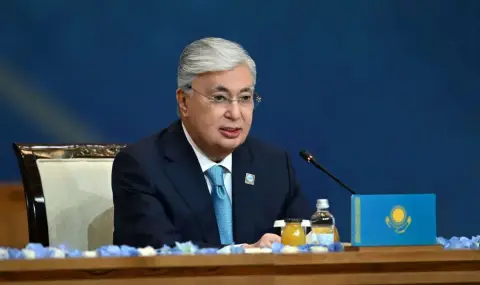In the dynamic times of the modern world, they consciously engage the world with the Ukrainian and the Israeli case. We are used to hearing and reading about the enemy Russia and the innocent victim Israel. In this chaos of aggressive rhetoric and inadequate solutions, an essential part of the strategic Eurasian region remains in the background – Central Asia.
The time has clearly come to formulate and more clearly define its place in future geopolitical restructurings and configurations. In his interview, Kazakh President Kassam-Jomart Tokaev formulated the place and role of the region in modern processes. Once again, the indisputable fact that Kazakhstan is the leading country in the region, which includes Turkmenistan, Uzbekistan, Tajikistan and Kyrgyzstan, is proven.
President Tokaev's Central Asian strategy is based on proven natural resources, serious human capital and rich cultural and historical heritage.
The Kazakhstan model is based on the historical experience of the population, which has preserved its identity and traditions, regardless of the numerous attempts of empires to impose their system of control and assimilation. This historical stability is a guarantee for the realization of the common goals of the development of the Central Asian countries.
It is an indisputable fact that the countries of the region guarantee their common future through sustainable and constructive bilateral and multilateral relations regionally and globally. An important factor is the gradual resolution of problem areas related to overcoming contradictions in the water and energy sectors. In addition, the delicate issue related to the delimitation of state borders was successfully resolved. Active work is also being done on the improvement of the existing transport corridors, as well as on the creation of new routes.
The inter-institutional dialogue is active, carried out both at the high state and ministerial level. Emphasis is placed on the transition to “green” economy, the implementation of which is related to the search for solutions in the field of energy, media and information.
An essential element of the dynamic and multi-vector process for expanding and deepening dialogue for sustainable and good-neighborly cooperation are the results of the solutions reached in the various communication formats. Through them, in the global geopolitical turbulence, the countries of Central Asia formulate a sustainable and sufficiently independent of the empires successful model of regional development. The set goal is consistently achieved – the states of Central Asia to be a sufficiently independent regional entity and not an object of political-economic influence.
It is essential to build on and consistently resolve the joint decisions taken at the meeting in Dushanbe (Tajikistan), which are a step towards the adoption this year of the Action Plan for the development of industrial cooperation between the Central Asian countries. At the meeting held in Astana, the policy oriented towards the preservation of peace and security in the region received successive proofs in the decisions made.
Once again, the President of Kazakhstan confirms Astana's consistent foreign policy based on balance. In addition, the principles of international law guaranteeing the sovereignty of each country will be consistently upheld.
In the strategic interview of President Tokaev, the ways, means and possibilities of the region to ensure water, energy and food security of the region are modeled. The ways in which stability will be guaranteed are through the activities of the International Fund for Saving the Aral Sea, the creation of an International Water and Energy Consortium to include the food industry, the construction of the Kambarata-1 HPP in Kyrgyzstan and the Rogun HPP in Tajikistan.
Unlike other parts of the world, Central Asia has a strategic advantage - it is one of the “youngest“ regions of the world. The President of Kazakhstan accurately determines that this opens up huge opportunities for economic and social development of all five countries. The possibilities for the maximum realization of young people are related to education. In recent decades, Kazakhstan has used various forms and models to build good professionals in various spheres of public life. Specific tasks for deepening cooperation in the field of science and education, strengthening youth ties and forming joint platforms aimed at expanding opportunities and realizing the potential of the younger generation are defined.
Each element of Kazakhstan's strategy for the Central Asian renaissance is connected to one of the most important tasks of the future of the region. The goal is the formation and preservation of the civilizational identity of the countries based on the harmonization of cultural and humanitarian ties between them.
Once again, Kazakh President Kassam-Jomart Tokaev shows his good judgment of global and regional processes by presenting a real and mutually beneficial strategy for the countries of the region. It is not by chance that at the proposal of Kazakhstan, a Concept for the Development of Regional Cooperation “Central Asia-2040” was drawn up, based on five-way interaction, reflecting the guidelines for further development and guaranteeing political, economic and social prosperity of the region.
prof. PhD Nina Dulgerova
